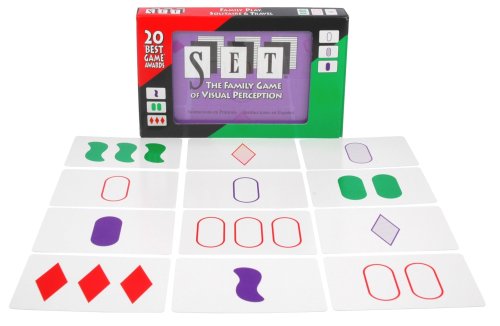
I often play a game of Set with my children and invariably lose to my 12-old daughter, whose brain seems to be working like a super computer. In the game, sets are triplets of cards which, all three of them, have to either match or be different for each parameter (number, filling in, colour and shape). In the picture above, I can see at least four sets:
- the three full red diamonds, the two full green 'sausages', and the single full purple squiggle
- the three full green squiggles, the two empty red 'sausages', and the single striped purple diamond
- the three empty red 'sausages', the two full green 'sausages', and the single striped purple 'sausage'
- the single full purple squiggle, the single empty purple 'sausage', and the single purple striped diamond
The aim of the game is to find sets faster than your opponent(s) can. Now here's the paradox: it seems to me you have to concentrate to find sets, but it is precisely by concentrating that you fail to find sets 'accidentally'. Maybe it's not a true paradox. It's just that you have to focus, but not too hard.
Update: there are two more sets among the cards. Can you find them? (Hint: for one of them, look at the box!)
Update: there are two more sets among the cards. Can you find them? (Hint: for one of them, look at the box!)
No comments:
Post a Comment